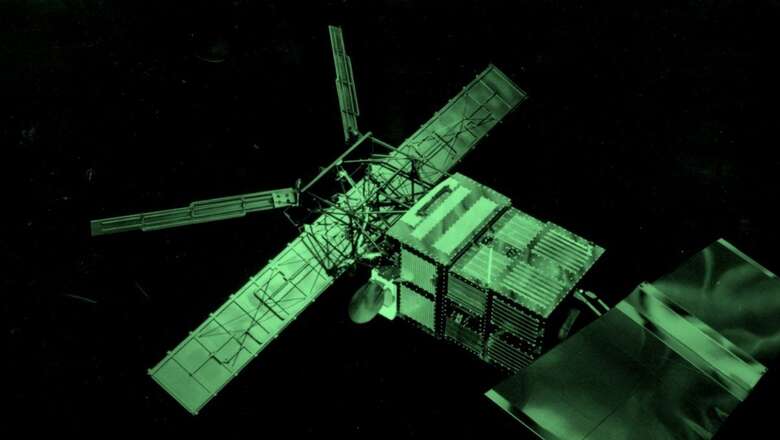
views
ERS-2, a European satellite, launched in 1995, is due to fall to Earth within the next few hours. It was one of the first cutting-edge observation platforms that forged technologies that are currently used to monitor the Earth, a report by the BBC said. The European Space Agency (ESA) which built the satellite said that most of the two-tonne satellites will burn up as it descends. It is supposed to enter the atmosphere some time on Wednesday.
The report said there could be some robust parts that can tolerate the intense heat which generates when satellites descend towards Earth and when they enter the atmosphere but the chances that these will hit populated areas and lead to damages are slim.
“And it’s worth highlighting that none of the elements that might re-enter the atmosphere (and reach the surface) are radioactive or toxic,” Mirko Albani from Esa’s Earth Observation Ground Segment Department was quoted as saying by the BBC.
‘Grandfathers of Earth Observation’
Dr Ruth Mottram who is a glaciologist with the Danish Meteorological Institute. She recalled the revolution ERS satellites brought to her discipline. She told the news outlet that the ERS-2 changed the perception of ice sheets being stable. “We were told that the ice sheets were very cold and stable, and they weren’t going to change much; it would take decades before we saw any of the kinds of changes we expected to see as a result of climate change. And ERS really showed that this wasn’t true, and that there were big changes happening already,” Mottram was quoted as saying by the news outlet.
The ERS-2 satellite was part of the two near-identical Earth Remote Sensing (ERS) launched in the 1990s. These satellites were considered the most sophisticated planetary observers of their day. These satellites could track changes on the land, in the oceans and in the air. They could also monitor floods, measure continental and ocean-surface temperatures, trace the movement of ice fields, and sensed the changes in the ground during earthquakes.
The satellite can land anywhere in the world but since most of the planet’s surface is covered by ocean the debris will likely be lost to the sea.




















Comments
0 comment